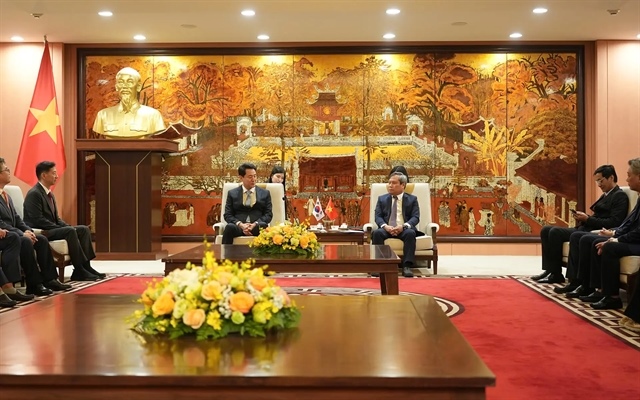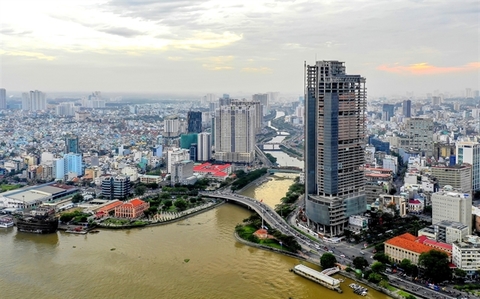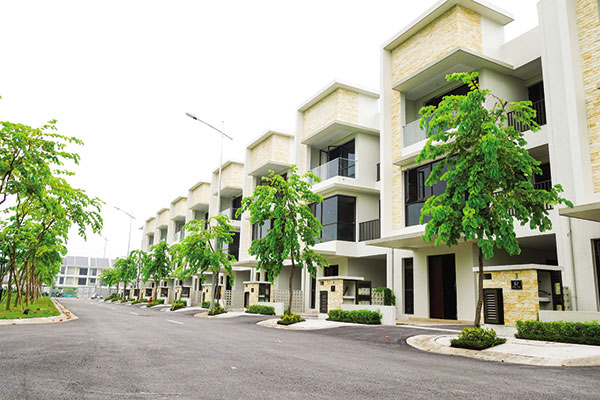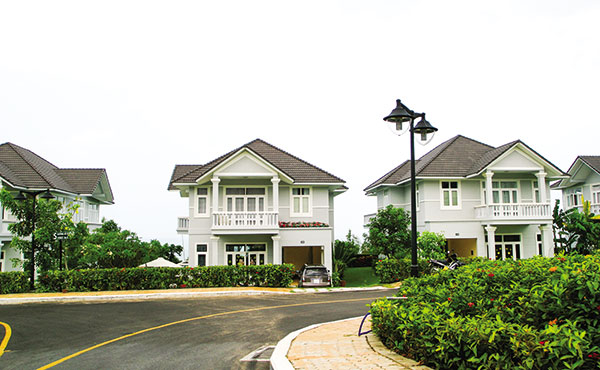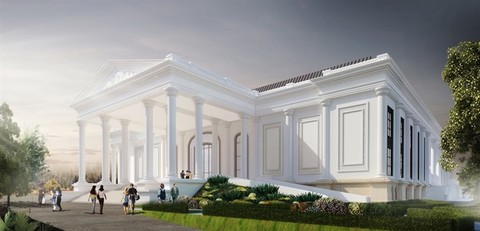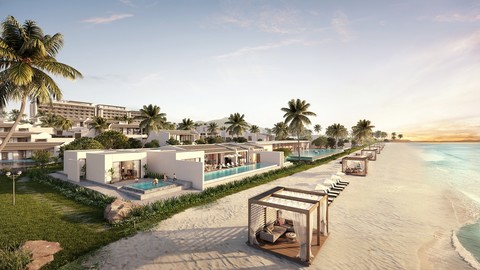Green growth for cities of the future
Green growth for cities of the future
In the face of the growing momentum of urbanisation, Vietnam is looking for ways to pursue urban green growth. Architects Tran Quoc Thai and Tran Ngoc Linh from the Ministry of Construction’s Urban Development Agency write about urban green growth trends and the emerging novel opportunities appearing on the radars of firms and investors.
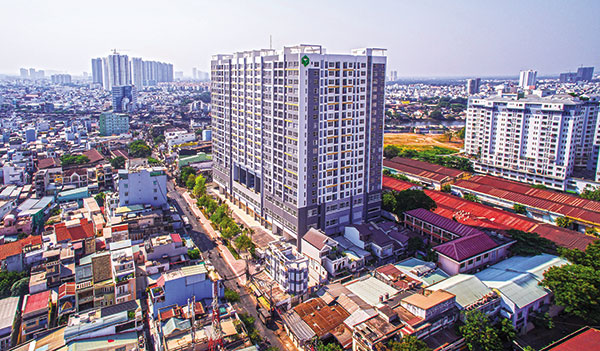
Urban development facilitating green growth is a continuous process with many difficulties and challenges. Realising the urban growth objective while mitigating immediate and long-term adverse effects on the environment requires a radical shift in mind-set and growth models. This is no longer just one of many options, but a mandatory and indispensable requirement for all. At the same time, achieving green growth goals also opens the door to integrating global trends with various potentialities.
Urban green growth trend
Urbanisation and servicisation are major global development trends. Since 2008, half of the world’s population lives in urban areas, and by 2050, this ratio will hit 75 per cent of the global population. Rapid urbanisation occurs at a higher rate in developing countries, especially in Asia. On one hand, urbanisation creates diversified markets with opportunities and higher economic productivity, contributing to improving the quality of life for residents with better services and better average incomes. On the other hand, urbanisation is also often associated with problems such as a lack of security, inequality, and especially environmental pollution. Cities and towns gather half of the world’s population, but account for two-thirds of total energy consumption and emit almost three-quarters of greenhouse gases.
Following the global financial crisis in 2008, green growth was highlighted by public opinion and policy analysts alike, because it promised to simultaneously tackle both climate change issues and faltering economic growth. Many international organisations, including the United Nations Environment Programme, World Bank, United Nations Economic and Social Commission for Asia and the Pacific, EU, and the Organisation for Economic Co-operation and Development (OECD), have been compiling a working definition of the concept. According to this definition, green growth is the process of identifying economic and environmental challenges to find new opportunities and resources for economic growth, which at the same time benefit society.
Thus, green growth is not another name for sustainable development. Green growth underscores the intimate relationship between economic and environmental concerns. At the same time, green growth does not ignore social equity issues. Green growth initiatives can result in tangible benefits to society and equity, as well as ensure that labourers will not be excluded during the transition to a green economy. The urban setting operates as a non-stop living entity. The Green Growth Programme of the OECD has implemented six in-depth studies in OECD member countries since 2010, focusing on four cities (Paris, Chicago, Stockholm, Kitakyushu) and two countries (China and South Korea). Accordingly, urban green growth is defined by the OECD as “fostering economic growth and development through urban activities that reduce negative environmental externalities, the impact on natural resources, and the pressure on ecosystem services.”
In line with the above definition, the OECD has identified four key concerns for countries and cities in developing their own indicators corresponding to health, natural conditions, environment, and people’s intellectual level. In addition, during the stages of development, each green growth indicator has a different impact on national policy in the short and long term. The four key concerns consist of 25 to 30 specific criteria monitoring urban green growth, including:
Natural resources and the environmental performance of the economy: These criteria monitor the efficiency of the use of natural resources in economic activities, such as CO2 efficiency (the correlation between GDP and CO2 emissions), energy efficiency (how much energy is used to create a unit of GDP), and material efficiency (how much material is used to create a unit of GDP).
Natural Resources: These criteria assess the extent to which natural resources are kept intact and preserved sustainably in terms of quantity, quality, and value, thereby identifying the risk of degradation by future economic growth.
Quality of life from the environmental aspect: These criteria assess the accessibility of environmental services such as wastewater treatment, waste disposal, etc.
Economic opportunities and policy feedback: Environmental protection can be considered a source of growth, competitiveness, trade, and employment. Thus, in order to monitor policies that are effective in bringing about green growth, criteria should be provided for such dimensions as research and development, environmental initiatives, development assistance for green growth, taxes and related fees, and others.
Initial efforts for green growth in Vietnam
In 2012, the National Green Growth Strategy for 2011-2020 with a vision to 2050 was enacted, identifying three strategic missions and 17 measures to achieve the country’s green growth goals. The National Urban Development Programme 2012-2020 also primes urban development toward a green economy. In the National Green Growth Action Plan 2014-2020, the implementation of a green urbanisation policy framework is a high priority. Thus, building up urban green growth is not simply an option in urban development, but a key task to be realised. In addition, the government of Vietnam pledged to the United Nations to mobilise all necessary resources, gather all ministries, sectors, localities, organisations, communities, and citizens to successfully accomplish the 2030 Agenda for sustainable global development. For the construction and urban development sector, there are nine out of 17 sustainable development goals and 31 out of 169 specific objectives in the agenda.
In recent years, a number of cities across the country have begun to incorporate green growth in urban growth. According to preliminary reports from 59 urban centres of grade IV and above in the country in April 2015, 24 urban centres had issued documents to direct the implementation of urban green growth measures. Several urban centres have issued green growth and climate change adaptation strategies, for example Haiphong and Can Tho. Other cities, like Danang, Bac Ninh, and Tam Ky, are conducting research. Compared to the total of 802 existing urban centres, this result is still modest, probably due to the fact that the concept of urban green growth is relatively new and no specific criteria or practical examples are readily forthcoming.
Green market and new investment opportunities
While changing the urban growth model toward green growth was initially difficult to implement, the investment opportunities in this area are gradually becoming apparent.
Economic development carries the preconception of improved life quality. It is reflected in the demand to live and work in a green, clean, and aesthetic space which is becoming a higher preference than ever, especially in large cities with high population density and pollution. Thus, there are emerging opportunities to invest in the supply of green agricultural products, environmentally friendly products, energy-saving appliances and equipment, as well as the provision of green and ecological urban real estate and green buildings.
With policies and macro-incentive mechanisms from the government, small- and medium-d enterprises can access many different funds to support energy-saving and environmentally-friendly investment projects, including Green Credit Trust Fund, Green Investment Fund, Vietnam Climate Innovation Centre, Global Climate Partnership Fund, and Vietnam Energy Efficiency for Industrial Enterprises Project, among many others.
At the city management level, green growth provides diverse investment opportunities for environmental goods and services, such as efficient waste management and waste disposal, processing waste to energy, development of green transportation, energy efficiency products, trading in new energy and renewable energy, water resources management, and others.
In an effort to develop urban green growth in a sustainable and competitive manner, municipalities are also in need of management and operation packages with synchronous and comprehensive solutions to mobilise, control, and utilise different resources for urban planning, programming, constructing, operating, and maintaining the community and environmental services. This in turn will be the market of policy advisory and capacity building services for research organisations, scientists, and policymaker advisors.
Conclusion
Over the past 20 years, Vietnam has achieved remarkable socio-economic successes and has risen to be a lower middle-income country. However, Vietnam is one of the countries worst hit by climate change. Therefore, in order to achieve sustainable global development, it is necessary to put in a lot more effort and support from governmental macro-urban policies as well as promote active participation from stakeholders. This new approach to urban green growth brings about a lot of new growth opportunities for economic sectors, especially the investment and energy sectors. Urban green growth gives us an opportunity to raise the living standards of the urban population. Although the identification of urban green growth targets is difficult and challenging, it is certainly the shortest path towards sustainable development.





